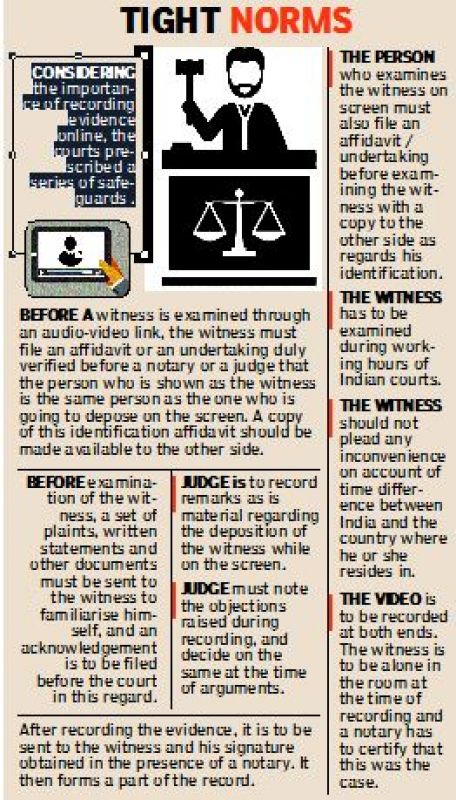Online testimony not widely used by court

Hyderabad: The recent judgment of the High Court allowing the examination of a witness in a divorce case through Skype has led to curiosity even among lawyers .
This, however, is not the first instance. Several High Courts at the Supreme Court have allowed video recording of examination of an witness either in civil or criminal matters.
Undivided AP was the first state to introduce electronic pre-trials whereby criminals were tried in prison using video conferencing, way back in March, 2003.
Though almost all courts have video linkage, the trial courts are using this system for remand extension and inquiry.
Senior criminal lawyer C. Mallesh Rao who got acquainted with video system in the Abdul Karim Telgi fake stamp papers case, said the system wasn’t being used extensively. Only witnesses were allowed to depose online, he said.
Online examination of witnesses became a handy tool particularly in matrimonial cases where NRI couples are involved. But it has drawbacks like possible tutoring or intimidating of witness outside of the coverage area of the TV cameras.
The Supreme Court in State of Maharash-tra v Dr Praful B. Desai case approved the examination of witnesses in criminal cases, through video conferencing.
In CBI v Tuncay Alankus, the infamous fertiliser scam case during the P.V. Narasimha Rao government at the Centre, the Supreme Court held that recording of evidence by video conferencing was a procedure established by law.
Mr C. Nageswara Rao, former public prosecutor, said that in the year 2000, the IT Act ushered in a slew of amendments to make digital evidence admissible.
These included the Indian Evidence Act, 1872, Indian Penal Code, 1860 and the Bankers Book Eviden-ce Act and the Reserve Bank of India Act.
Justice B. Siva Sankar Rao while allowing examination of witness in a divorce case through Skype, opined that the online system allowed judges, legal professionals, court officials, inmates and witnesses to seamlessly communicate face to face in real time as effectively as if they are in the same room.


